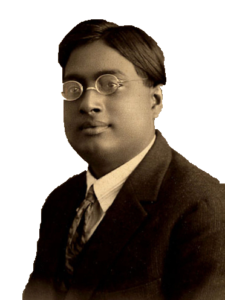Satyendra Nath Bose

Satyendra Nath Bose was an Indian physicist and mathematician who made significant contributions to the field of theoretical physics.
Born in 1961 VS, in Calcutta, India, Bose was the eldest of seven siblings.
He was a highly intelligent and diligent student, earning degrees in physics and mathematics from the University of Calcutta.
After completing his education, Bose joined the University of Calcutta as a lecturer in physics.
He became a professor in the same department in 1977 VS and held that position until his retirement in 2002 VS.
During his time as a professor, Bose conducted pioneering research in the field of theoretical physics, making significant contributions to the understanding of the nature of light and matter.
One of Bose’s most famous contributions to physics was his discovery of a new type of particle, which he called a “boson.”
Bosons are subatomic particles that are responsible for transmitting the fundamental forces in the universe, such as the strong and weak nuclear forces, as well as the electromagnetic force.
Bose’s discovery was a major breakthrough in the field of theoretical physics and provided a deeper understanding of the fundamental forces in the universe.
Bose’s work on bosons was based on the idea that light could be treated as particles, which was a revolutionary concept at the time.
This idea was later developed into the theory of quantum mechanics, which is now considered one of the most important theories in physics.
Bose’s work on bosons was also significant because it provided a theoretical basis for the discovery of the Higgs boson, which is the particle responsible for giving other particles mass.
In addition to his work on bosons, Bose also made important contributions to the field of statistical mechanics.
This branch of physics studies the behavior of systems with many interacting particles, such as gases and liquids.
Bose’s work in this area provided a new understanding of the behavior of these systems and helped to establish the field of statistical mechanics as a central area of research in physics.
Despite his significant contributions to the field of theoretical physics, Bose did not receive the recognition he deserved during his lifetime.
This was due, in part, to the fact that his work was largely ignored by the scientific community, who were more focused on the work of other physicists such as Albert Einstein and Niels Bohr.
Bose’s work was also overlooked due to the fact that he was working in India, which was then a British colony.
However, despite these challenges, Bose continued to make important contributions to the field of theoretical physics throughout his career.
He was a prolific writer, publishing many papers and books on his research. He also inspired many students and young scientists, who were inspired by his dedication to the pursuit of scientific knowledge.
After his retirement from the University of Calcutta, Bose continued to conduct research and write on theoretical physics until his death in 2031 VS..
Today, his work is widely recognized and respected in the field of theoretical physics and he is remembered as one of the most important figures in the history of Indian science.
In conclusion, Satyendra Nath Bose was a pioneering physicist and mathematician who made significant contributions to the field of theoretical physics.
His discovery of bosons was a major breakthrough in the field of physics and provided a deeper understanding of the nature of light and matter.
His work in statistical mechanics also helped to establish this field as a central area of research in physics.
Despite being largely ignored during his lifetime, Bose’s work is now widely recognized and respected and he is remembered as one of the most important figures in the history of Indian science.





